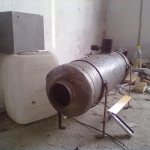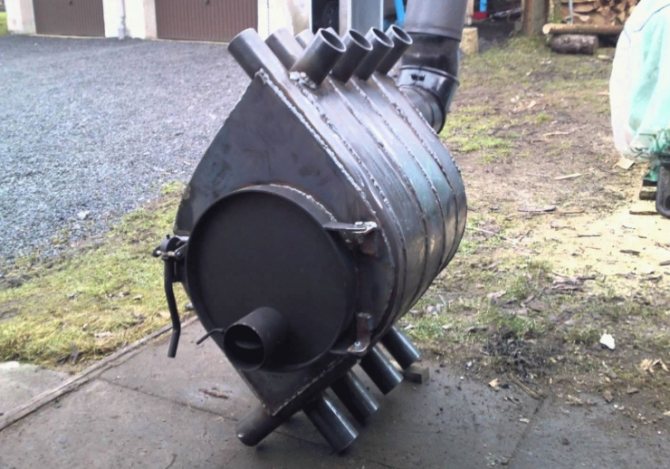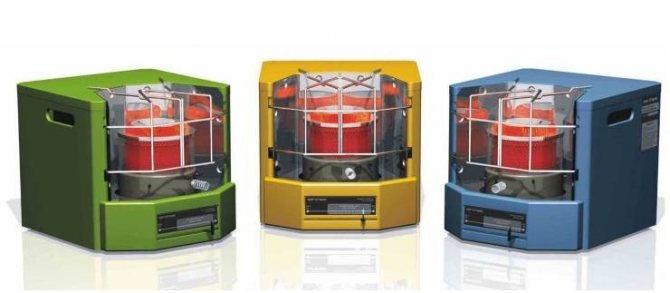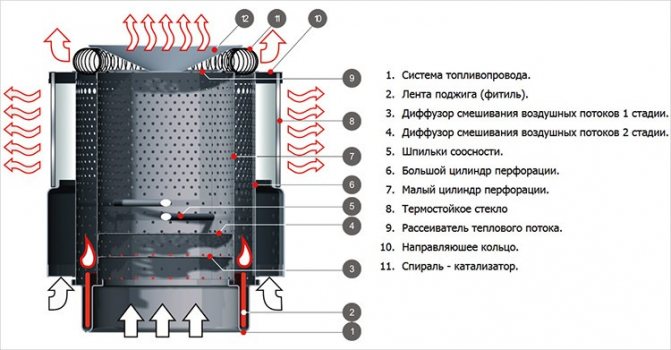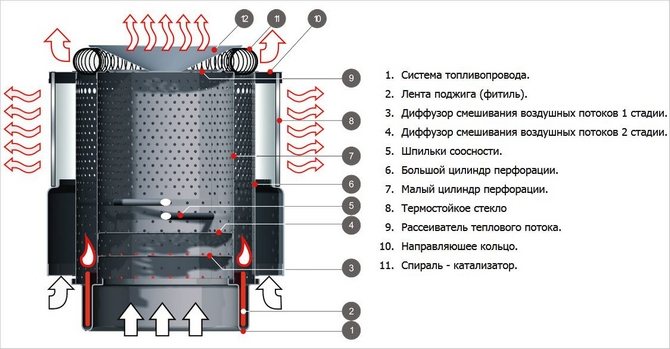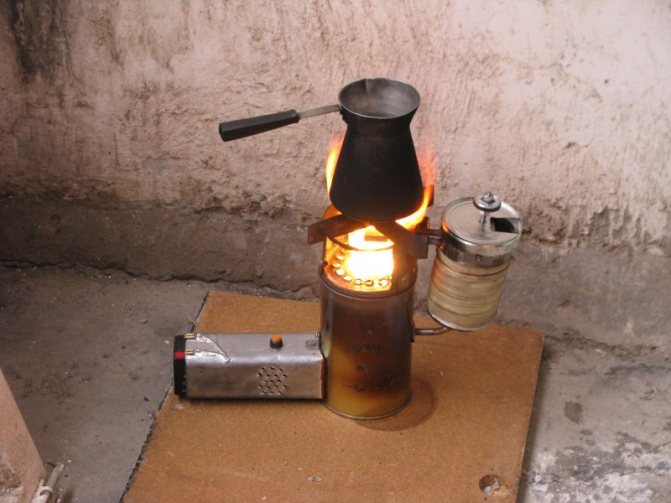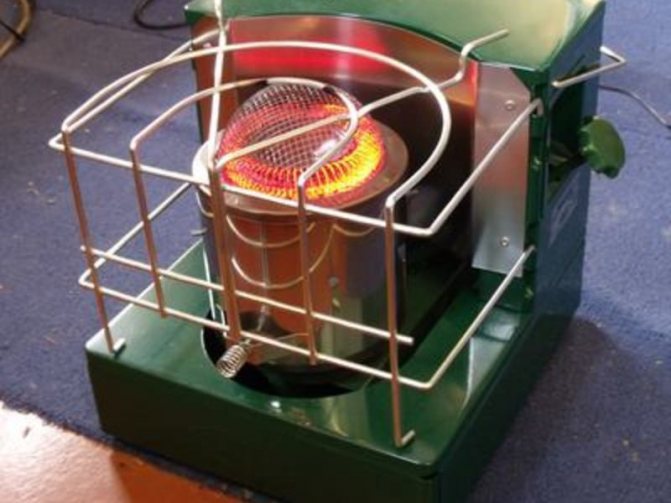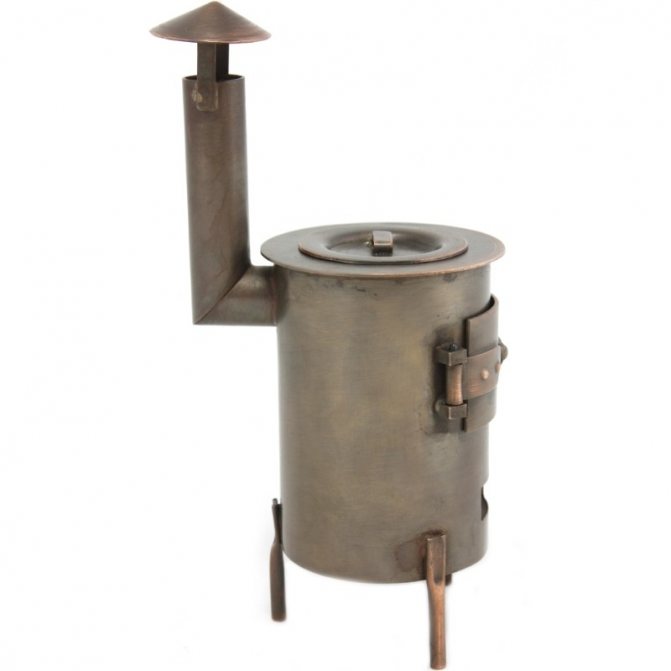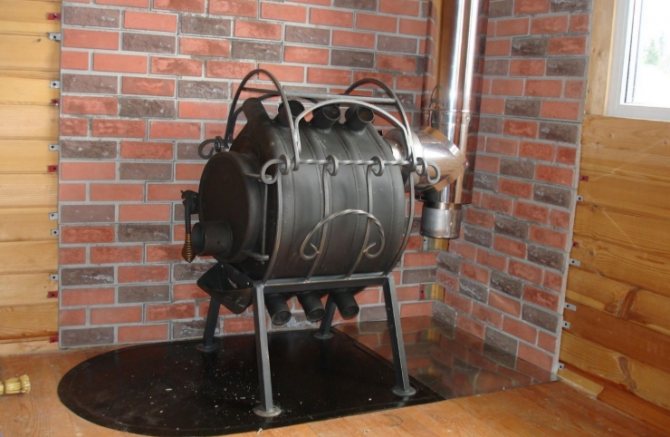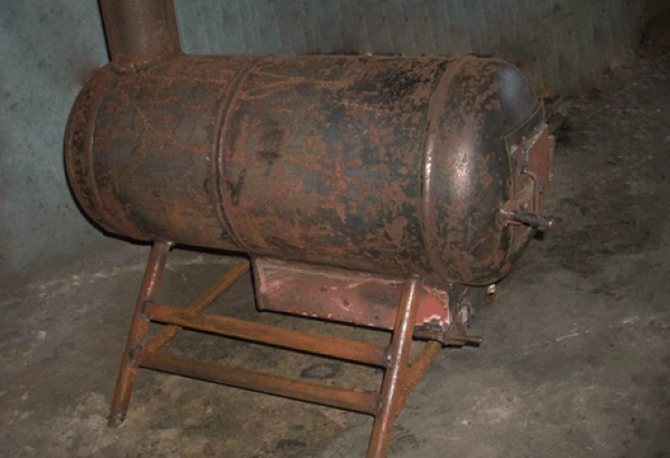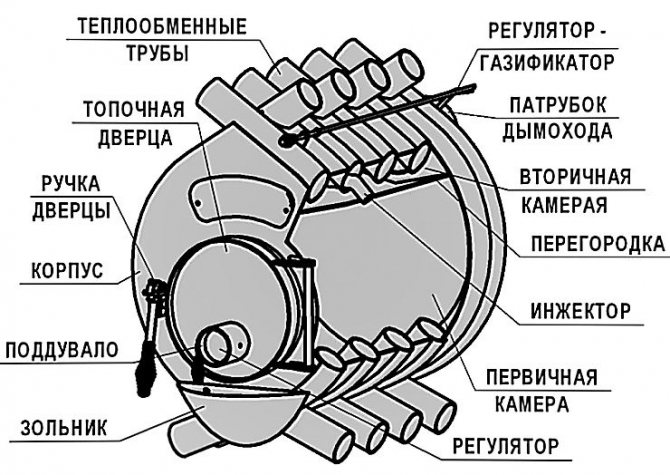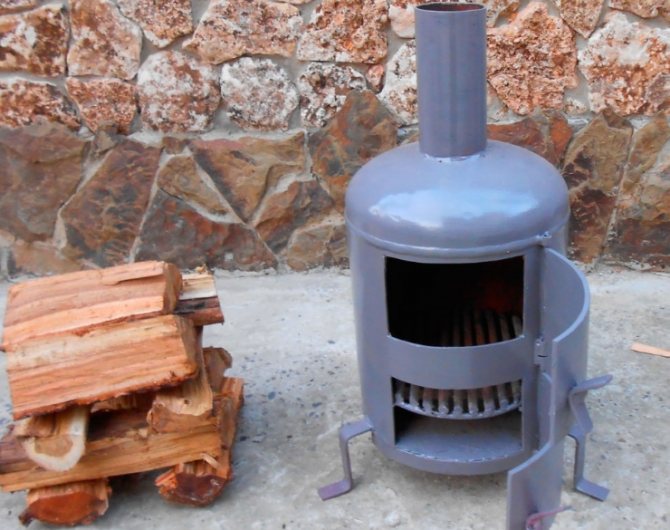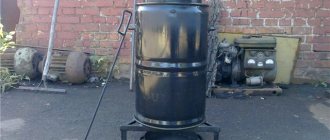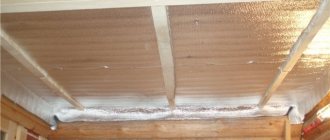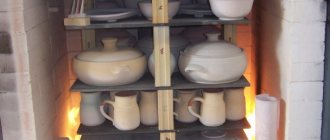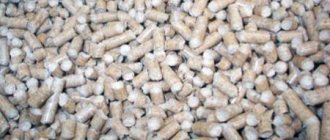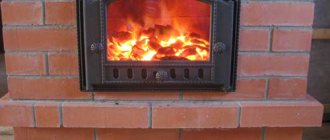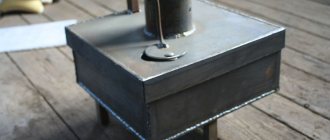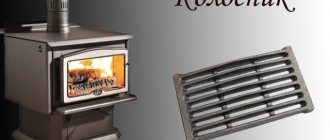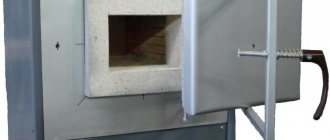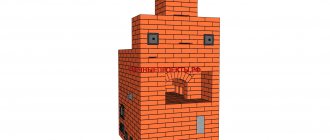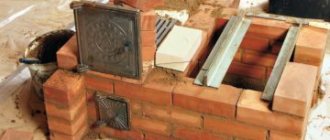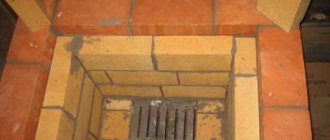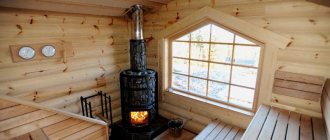Heating with a stove on diesel fuel
The diesel stove is chosen for heating garages due to its small size and low energy consumption. For example, a stove with a capacity of 2.5 kW consumes no more than 0.2 liters of diesel fuel per hour. The weight of the stove usually does not exceed 10 kg, and the compactness of the device allows you to put the stove in any place convenient for a person.
There are several main types of diesel stoves:
- mini oven with wick;
- heat gun;
- direct combustion furnace;
- dropper stove;
- heated water oven.
Each of the ovens has its own characteristics.
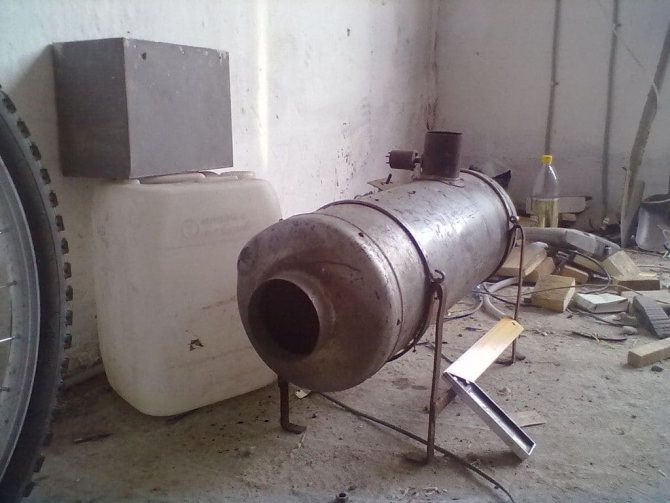
Homemade stove on diesel fuel
Mini oven with wick
These heaters can be purchased at the store. The furnace design consists of two main parts - a fuel tank and an open tank. The vessels are interconnected, and the fuel supply is controlled by a special valve. Another indispensable element of a mini-oven is a wick, the tip of which is immersed in a container with fuel. The diesel fuel supply is regulated thanks to a special valve. After turning the valve, the valve opens between the communicating vessels, thereby impregnating the wick with a combustible mixture. In the same way, the device turns off, cutting off the fuel supply.
Such a furnace is fired manually. A match or a lighter is suitable for this. It is worth setting fire to the wick a couple of minutes after opening the valve. You must also wait 10 minutes for the oven to warm up. After that, the autonomous diesel oven will work independently. The diesel mini-oven turns off 5 minutes after you turn off the valve.
The power of the factory furnaces is from 1.8 to 5 kW. Some of them are equipped with a special metal grate on which you can heat something. For example, boil water. This design is suitable for those who spend a lot of time in the garage during the winter.
Do not forget that the diesel fuel stove has several significant drawbacks. First of all, it is a pungent unpleasant smell. It is best to light the wick outdoors. Diesel fuel vapors are toxic and carcinogenic; such a heater must not be used around the clock. Also, if you use the stove frequently, it is necessary to clean the burner on a regular basis. The wick needs to be replaced regularly.
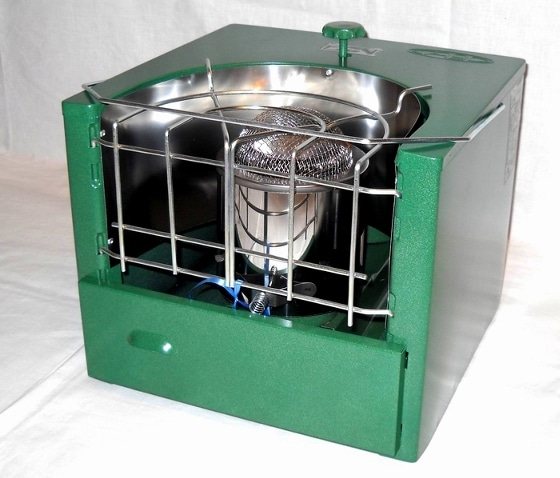

Diesel Mini Oven with Industrial Wick
Features of use
The delivery set must include instructions, since despite its simplicity, the oven is a device and requires proper care. The height of the 7 cm frying pan was not chosen by chance. Do not fill the container to the brim, the recommended level for cooking is half the height, and when baking pies - 1/3.
Products that are ingredients for the future dish take some of the heat radiated from the lid. If there are no products in the pan, then this situation is fraught with overheating of the element. You can turn on an empty oven, but only for a certain time. After the cooking process, the oven can be washed with any detergent other than those containing abrasive particles. Do not leave moisture before long-term storage, therefore, after washing, the surface should be dried or wiped dry.
Questions regarding electrical safety correspond to the requirements for the condition of the electrical wiring. The cord must be completely insulated and must be disconnected from the device after switching off. When operating the oven, it is necessary to restrict access to children, as the body gets very hot.
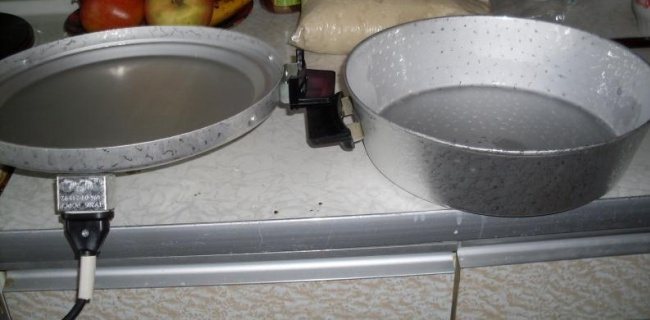

The appliance consists of a lid and a frying pan
Homemade stove with wick
For the manufacture of a homemade stove on fuel, you must use only high quality materials. The furnace must be necessarily small in size, since the wick devices have a large heat release. If the device overheats, it could cause an explosion.
If possible, it is best to use a primus instead of a wick. Due to the low consumption of diesel fuel, it is safer. The primus should be made of asbestos cord. It must be rolled into a dead loop. The risers should be soldered into the fuel tank. The volume of the fuel tank must not exceed 0.7 liters. A small pallet must be soldered to the fuel pipes under the dead loop, which will be used for ignition. The principle of operation of a home-made stove is quite simple: diesel fuel is poured into the pallet and ignited, the primus heats up and the combustion process begins.
Do it yourself
Building a heater yourself is a very costly, time-consuming and labor-intensive process. It justifies itself only when its cost price is lower than the factory development price. For a miracle oven, this process is unjustified, but everyone decides for himself what is best.
There are several types of diesel fuel heaters.
Gas cylinder heater
For manufacturing you will need:
- A seamless cylinder with a wall thickness of less than 1.5 cm.
- Chimney pipes with a length of 4 m and a diameter of over 10 cm.
- Fuel tank up to 15 liters.
- Copper pipes.
- Bulgarian and welding machine.
- Steel squares.
The process of supplying diesel fuel goes by gravity. It does not require additional elements for heating the air. The combustion source must be at the same height as the circuit. This prevents the furnace from overheating to a fire hazardous temperature.
Manufacturing instruction:
- Cut the balloon with a grinder into two even parts. One of them will serve as a cover, the other - a camera.
- Weld metal corners to the cameraso as to form the legs.
- Make a small hole in the lid with a welding machine for an exhaust pipe with a diameter of 10 cm. The hole should be made at a distance of 15 cm from the edge.
- Make a small hole in the caseto be used to adjust the air flow. It will be covered with a special plate.
- Measure 10 cm from the place of welding and make a hole 3 mm in diameter at the obtained point. According to this principle, 10 more holes should be made, the last of which will be located at a distance of 0.5 m from the welding point.
- Drill a hole in the pipe for a pipe with a diameter of 8 cm and a length of 4 m. It should be mounted parallel to the floor and welded well.
- To fill the fuel fluid in the cap, do additional hole with a diameter of no more than 8 cm.
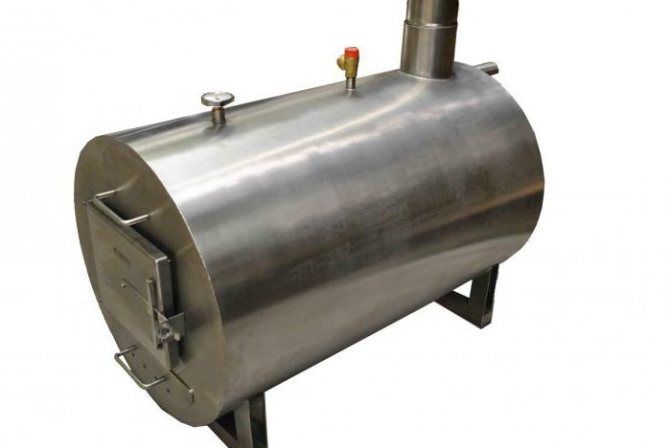

The combustion source must be at the same height as the circuit, this prevents the furnace from overheating to a fire hazardous temperature
Drip stove type
The drip oven is very easy to manufacture. As a rule, it is used to heat a small area of premises.
Manufacturing instruction:
- Make a preliminary calculation of the area that will be heated. For example, for a room measuring 3 by 3 meters, a box with parameters 30x30x45 cm will be enough.
- For a small stove, you can use a container from a fire extinguisher, for larger sizes, you can use a container of 200 liters.
- For a container for diesel fuel, a container with a volume of 2 liters is sufficient, for example, you can use an ordinary medical burner. To connect it, connect the rubber hose of the burner at an angle of 90 degrees to a copper pipe with a small diameter and a length of 1 m.
- The hose should be bent in half and secured with a clamp to fix the stove parts. The adjusting screw should be mounted so that the flow of fluid is dripping.
- Instead of a wick, you can use rags soaked in diesel fuel.
- Install the door.
- Make a hole in the center of the case for the diameter of the copper pipe.
- If you plan to use the appliance for cooking, do not mount the tube from the top, but from the side.
Heat gun
A heat gun is used to warm up large enough rooms, up to 20 m3. The cannon heats up the air by letting it through with a fan, thereby heating the process much faster than a device with a wick. Models are manufactured with power from 10 to 100 kW. This is a fireproof device that has emergency shutdown functions from the fuel supply.
A heat gun is a cylinder-shaped structure that consists of a fan, a fuel tank and a burner. To start the fan, such a device needs power supply.
There are two types of guns: direct and indirect heating. The direct heating device is suitable for heating air in open areas. For premises, you should purchase a heat gun only for indirect heating, the smoke from which is removed through the chimney.
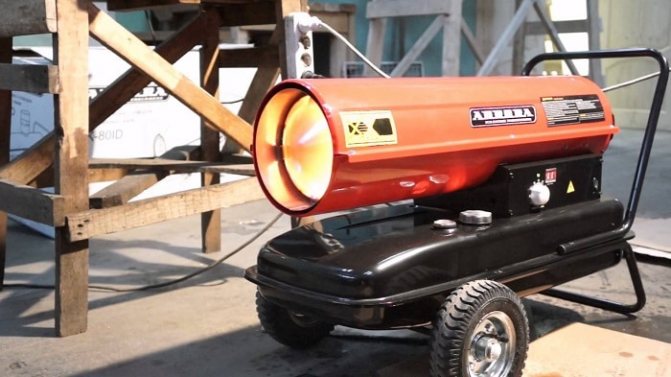

Industrial Diesel Heat Gun
Diy heat gun
Despite the name, the heat gun can be made not only round, but also rectangular. To create the unit body, a metal pipe or galvanized iron sheet is suitable. Several containers need to be made. One will be used as a fuel tank, the other as a place for the combustion chamber and fan.
In order to heat the room as quickly as possible, it is advisable to use a sufficiently powerful fan. The air will circulate faster through the heat gun, thereby the room will heat up faster.
It is desirable to make the diesel tank from a material with low thermal conductivity. You can use ordinary metal, but then you should take care of thermal insulation. It is necessary to place the tank at the bottom of the structure, the distance to the top should be at least 15 cm.
The fan is installed on the back of the upper case. A metal tube extends from the fuel tank, which is connected to the fuel filter and a pump, which is connected to the combustion chamber through a nozzle. The front wall of the structure is closed with a mesh. It is also worth taking care of creating a smoke outlet.
The heat from the heat gun can reach 400 degrees, so you cannot be directly in front of the unit. It is best to use such a heater outdoors. If they heat the room, then you should take care of the smoke coming out of it.
Specifications
Heating elements consume 0.8 kW of electricity. Compared to a microwave oven, this figure is very low. The cord has a convenient and safe connector with sliding contacts. The diameter of the pan is 28 cm. The maximum volume of the container when it is fully filled is 3.5 liters.
Good to know: How to build a wood-fired pizza oven with your own hands
With such dimensions, the stove is easy to disassemble and place on one of the shelves of the kitchen cabinet. European counterparts are equipped with modern features. These are thermostat, non-stick coating, insulated handles, pressure relief valve. But such options only increase the cost of the device. And again, our hostesses prefer the Russian manufacturer.
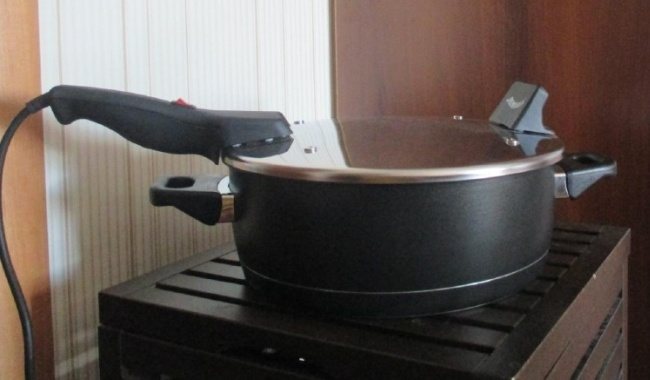

Original modification
Direct combustion furnace
A direct combustion stove can be made by yourself. Such a unit will operate due to natural air draft.
To create a direct combustion furnace, only three structural elements are needed - two metal tanks and a pipe. The containers can be either square or cylindrical.
The lower tank serves as a container for diesel fuel. It is necessary to attach several legs to it for the stability of the structure. The tank is no more than half filled with liquid fuel. A small hole with a flap must be made on the lid, through which the air supply can be regulated.
A pipe must be connected to the lower tank. This is the so-called afterburner. In it, the remaining fuel is mixed with secondary air.
The pipe is connected to the upper tank. The container must be equipped with a partition inside, behind which a hole will be made for the smoke to escape.
The disadvantage of such a furnace is its high fuel consumption. An hour of heating can take up to 2 liters of diesel fuel. Like any home-made heating device, a direct-burning stove can ignite, so it must not be left unattended.
Miracle wood-fired oven
When a person plans to settle in a private home, be it a village house, a cottage in the city or a house somewhere in isolation, the issue of high-quality heating of the building always arises.
The ability to bring central heating to the house is available only within the city, and even then not always, in less civilized places a natural gas system can come to the rescue. Sometimes it happens that in the place chosen for construction there is no gas pipeline either, or connecting to it is too expensive, and the delivery of gas in cylinders for some reason is not an acceptable option. In this case, the only suitable solution is the construction of such a heating unit as a miracle stove with wood or other solid fuel, which is usually enough anywhere outside the city, and you don’t need to pay for it. You can design a suitable oven yourself if you have all the necessary tools and materials, as well as good drawings.

